The time is now. Well, maybe you could argue that some of these changes could have come sooner, but the 2021 Toyota HiLux is here, and plenty of amendments and adjustments have been made.
The revised and revamped 2021 HiLux has seen a number of visual changes for some variants, while inside there’s new technology that brings the Toyota ute up to standard against its contemporaries. Yes, it finally has Apple CarPlay, Android Auto, volume and tuning knobs on the touchscreen and a digital speedo.
That’s just the start, though. Toyota Australia says the new HiLux has been thoroughly reworked to offer a more comfortable drive experience, not to mention the 2.8-litre automatic versions copping a welcome upgrade to power and torque.
With the Ford Ranger constantly treading on the tail of the HiLux, and an all-new D-Max from Isuzu just launched - soon to be followed by a new Mazda BT-50 - has Toyota done enough to remain on top of the relevance list, and the shopping list?
In this review we’ll cover what’s changed, what could have changed even more, and also the important stuff like pricing, specs, safety, ownership and more.
Toyota Hilux 2021: Workmate (4x4)
| Engine Type | Diesel Turbo 4, 2.4L |
|---|---|
| Fuel Type | Diesel |
| Fuel Efficiency | 8.0L/100km (combined) |
| Seating | 5 |
| Price From | $44,880 - $52,140 |
| Safety Rating |
|
Does it represent good value for the price? What features does it come with?
7 / 10
There have been adjustments and additions to the HiLux range for 2021, including a couple of new added-value variants and changes to some trim lines. And, sadly, prices are up between $1440 and $3160 across the range.
Okay, let’s break it down in terms of the model grades.
The Workmate badge is across more bodystyles than any other in the HiLux line-up, with 12 derivatives available.

It is sold in single cab, extra cab and dual cab body styles, as well as in 2WD/RWD/4x2 or 4WD/4x4. There are different engines depending on the style of Workmate you get, so here’s a table that should make it easier to understand this complex model range and its pricing (list pricing, before on-road costs - also known as MSRP or RRP).
TOYOTA HILUX WORKMATE RANGE | |||
Drivetrain | Body type | Engine and transmission | List pricing (before on-road costs) |
4x2 | Single cab-chassis low-rider | 2.7L petrol, five-speed manual | $23,590 |
2.7L petrol, six-speed auto | $25,590 | ||
Single cab-chassis Hi-Rider | 2.4L turbo diesel, six-speed manual | $28,830 | |
| Dual cab ute low-rider | 2.7L petrol, five-speed manual | $33,070 | |
2.7L petrol, six-speed auto | $35,070 | ||
| Dual cab ute Hi-Rider | 2.4L turbo diesel six-speed manual | $40,160 | |
2.4L turbo diesel six-speed auto | $42,160 | ||
4x4 | Single cab-chassis | 2.4L turbo diesel six-speed auto | $39,520 |
| Extra cab-chassis | 2.4L turbo diesel six-speed auto | $45,220 | |
| Dual cab-chassis | 2.4L turbo diesel six-speed auto | $47,290 | |
| Dual cab ute | 2.4L turbo diesel six-speed manual | $46,790 | |
2.4L turbo diesel six-speed auto | $48,790 | ||
Now, you might be hard pressed to tell a 2021 HiLux from its predecessor in some Workmate trims, because single-cab variants and the 4x2 Workmate dual-cab pick-up retain the same exterior design as before. There’s a “bolder front fascia” on 4x2 Hi-Rider and 4x4 extra- and dual-cab variants.
In terms of standard equipment, all WorkMate models come with steel wheels (16-inch on 4x2 models, silver 17-inch rims on 4x2 single-cabs, and black 17-inch wheels on 4x4 extra- and dual-cabs). Further, there are auto halogen headlights, cloth seat trim, vinyl flooring, all-weather floor mats, and a new 8.0-inch touchscreen display powered by an updated multimedia system with control knobs (instead of buttons on the side - rejoice!) plus it apparently has enhanced voice control to better team up with the newly added Apple CarPlay and Android Auto smartphone mirroring tech. There’s also a new instrument cluster design with a 4.2-inch digital display with digital speedo readout.

How many seats in the HiLux? Single cab models have two seats, while extra cab models have four seats (a rarity these days - but no child seat anchors in the back) and dual cab variants have five seats.
And there’s more to be considered in the safety section below when it comes to inclusions across all the HiLux models. Suffice to say, it’s pretty good, but not the best in the class, and you still can’t get a reversing camera on cab-chassis models… how could Toyota not have gotten that simple addition right by now?
The second step up the HiLux range is the SR. And now, there’s also a SR+, which adds a few extras. First let’s look at the prices, then we’ll look at the inclusions:
TOYOTA HILUX SR/SR+ RANGE | |||
Drivetrain | Body type / variant | Engine and transmission | List pricing (before on-road costs) |
4x2 | Extra cab ute Hi-Rider SR | 2.8L turbo diesel, six-speed auto | $44,210 |
| Dual cab ute Hi-Rider SR | 2.8L turbo diesel, six-speed manual | $43,230 | |
2.8L turbo diesel, six-speed auto | $45,230 | ||
4x4 | Single cab-chassis SR | 2.8L turbo diesel six-speed manual | $42,590 |
2.8L turbo diesel six-speed auto | $44,590 | ||
| Extra cab-chassis SR | 2.8L turbo diesel six-speed manual | $46,250 | |
2.8L turbo diesel six-speed auto | $48,250 | ||
| Dual cab-chassis SR | 2.8L turbo diesel six-speed manual | $48,510 | |
2.8L turbo diesel six-speed auto | $50,660 | ||
| Dual cab ute SR | 2.8L turbo diesel six-speed manual | $50,010 | |
2.8L turbo diesel six-speed auto | $52,160 | ||
| Dual cab ute SR+ | 2.8L turbo diesel six-speed manual | $52,010 | |
2.8L turbo diesel six-speed auto | $54,160 | ||
Thinking about stepping up from Workmate to SR? Here’s what the extra cash will net you.
Single cab SR models get 17-inch steel wheels in silver, while extra cab and dual cab models have black rims. Then there are black side steps… and that’s about it. Oh, dual cab SR models get a 60:40 split fold rear seat base with stowable armrest.
Think you need more, but don’t want to step up to the next grade? The SR+ costs $2000 and adds dark-grey 17-inch alloy wheels, satellite navigation and digital radio.
Next up is the SR5 line-up, and we’re including the SR5+ in this table, too:
TOYOTA HILUX SR5/SR+ RANGE | |||
Drivetrain | Body type | Transmission | List pricing (before on-road costs) |
4x2 | Dual cab ute Hi-Rider SR5 | 2.8L turbo diesel six-speed auto | $53,690 |
4x4 | Extra cab ute SR5 | 2.8L turbo diesel six-speed auto | $58,400 |
Dual cab-chassis SR5 | 2.8L turbo diesel six-speed auto | $58,240 - new model | |
Dual cab-chassis SR5+ | 2.8L turbo diesel six-speed auto | $60,920 - new model | |
| Dual cab ute SR5 | 2.8L turbo diesel six-speed manual | $57,920 | |
2.8L turbo diesel six-speed auto | $59,920 | ||
| Dual cab ute SR5+ | 2.8L turbo diesel six-speed manual | $60,420 | |
2.8L turbo diesel six-speed auto | $62,420 | ||
The SR5 variants add a few more items to differentiate them from the lower-grade variants, including LED headlights, two-tone 18-inch alloy wheels, a sports bar (pick-ups only), unique tail-lights, satellite navigation, digital radio and a leather-trimmed steering wheel and gear selector.
Add $2500 to the bill for a SR5+ version, and you get eight-way power-adjustable driver’s seat, heated front seats and leather-accented upholstery over the SR5 for $2500 extra. Note - the seat heating is only on/off - no multi-modal, and unlike many other utes in this segment, the HiLux still only has single-zone climate control. You do get keyless entry and push-button start, though.

Wondering what’s missing? No HiLux has an auto-dimming rear view mirror, nor is there passenger seat electric adjustment available on any grade.
Oh, and at the time of publication, Toyota Australia had confirmed both the Rogue and Rugged X models will be back for 2021 onwards, but there is no firm details on pricing yet. You can read out spec expectations story here.
Beyond what you can get pre-packed in the Rogue and Rugged X models, the accessories options are well and truly catered for if you want to go for all Toyota Genuine Accessories. Items include: bull bar and nudge bar options, roof rack, roof box, canopy, tub liner, window tint, headlight protector, bonnet protector, snorkel and side steps.
Curious about colours? The classics are all there - white (no cost), and metallic options (all $600) including black, grey, silver, blue and pearl white. No red, maroon, brown, yellow or green, though. We will see more colour options available in Rogue and Rugged X variants.
All told, the HiLux isn’t the best equipped ute out there on the market. Rivals offer similar ranges for less money and with similar or better levels of standard equipment. None of them are HiLuxes, though, and that could be all that matters to you.
Is there anything interesting about its design?
8 / 10
Interestingly, Toyota Australia decided to self proclaim that the new HiLux is “better-looking” than ever.
Umm - that’s a way to annoy a bunch of owners of the current or existing HiLux models, and look, it’s also maybe not actually that accurate a statement, depending on who you ask. And maybe Toyota could have said it differently, since in August 2018 the brand debuted the “Aussie-styled face” for SR and SR5 models…!
It is fair to say the new model is more eye-catching in the higher grades, with the SR5 models adopting a chrome grille surround that is reminiscent of Toyota’s tough trucks sold in the US - the Tacoma and 4Runner, for instance. To me, though, the new grille makes it a little bit a walrus face.

You will make up your own mind on what you think about the new look for the Lux, and it's worth mentioning that Toyota's Australian engineers and designers are behind the changes at the front of the majority of the HiLux model range. But in some cases there haven’t been major visible changes: Workmate 4x2 models (including Hi-Rider), plus the Workmate single cab 4x4 and SR single cab 4x4 all retain the same front end design as before, as they're considered "Narrow Body" versions, while the rest are "Wide Body" models.
While the "graphic" elements of the some new HiLux models have changed - headlights, grille, bumpers, tail-lights - the body of the ute is unchanged.
For the next part of this review, things are going to get deep on dimensions. Fair warning.

First, body dimensions for each of the types of HiLux - obviously this varies a bit for cab-chassis models as the tray body fitted may change the length, width or height, but we’re using the figures provided by Toyota for the pick-up models as guidance:
Single cab | Extra cab | Dual cab | |
Length | 5325mm | 5325mm | 5325-5330mm |
Wheelbase | 3085mm | ||
Width | 1800mm | 1855mm | 1800mm-1855mm |
Height | 1690-1795mm | 1810mm | 1700-1815mm |
Load space dimensions are also dependent on the tray/tub situation - only ute/pick-up models are listed below.
Extra cab ute | Dual cab ute | |
Cargo floor length | 1840mm | 1555mm |
Width | 1540mm | 1575mm |
Width between wheel arches | 1109mm | 1109mm |
Depth | 480mm | 480mm |
Like every other pick-up in this segment - aside from the commodious VW Amarok - you can’t fit an Aussie pallet (1165mm by 1165mm) between the arches.

Next up let’s look at payload capacity for the different body styles. A pretty broad range of usability for heavy duty work, and don’t forget the payload will be affected by tray body fitted if you’re choosing a cab-chassis. We’ve listed out all the weight details below - typically the higher figure is the 2WD variant if applicable.
Single cab-chassis | Extra cab-chassis | Extra cab ute | Dual cab-chassis | Dual cab ute | |
Payload capacity | 1210-1275kg | 1150-1200kg | 1045-1130kg | 1085-1125kg | 980kg-1160kg |
Gross vehicle mass (GVM) | 2700-3100kg, depending on model, engine, drivetrain | ||||
Gross combination mass (GCM) | 4x2: 5200-5650kg - depending on model, engine, drivetrain 4x4: 5850kg | ||||
Towing capacity | All models: 750kg unbraked 4x2 petrol: 2500kg braked 4x4 diesel: 3500kg braked | ||||
We’ve got more angles and details to come - this time we’re looking at the important dimensions and considerations for off-road use. This could matter even if you’re parking on a worksite and not planning a massive hardcore off-road trip.
Ground clearance mm | 4x2 petrol: 174mm All other variants: 216mm | ||||
Approach angle | 4x2 petrol: 23 degrees All other variants: 29 degrees | ||||
Break over/ramp over angle | Not listed by Toyota | ||||
Departure angle | 4x2 dual cab petrol: 20 degrees 4x4 single cab diesel: 25 degrees 4x4 dual cab diesel, extra cab-chassis, dual cab-chassis: 26 degrees 4x2 Hi-Rider, Workmate 4x4 manual dual cab ute, SR/SR5 dual cab ute: 27 degrees | ||||
Wading depth | 700mm | ||||
We’ll get to how those details translate to the drive experience below.

How practical is the space inside?
8 / 10
Finally! It’s about time, Toyota! That was the refrain from pretty much everyone in the CarsGuide office - and probably every potential HiLux customer - when the word got out about upgrades to the media system.
Not only does it now have Apple CarPlay and Android Auto, but there’s a new 8.0-inch touchscreen, too. And in an even bigger win, it now has volume and tuning knobs and an array of hard buttons down either side of the screen, rather than buttons on the edge of the screen which were tedious and damn near impossible to hit correctly if you were on a bumpy road… or in the case of the pre-facelift ‘Lux, any road…!

And the great news is that the new screen is across all models in the range, so whether you buy the entry-grade Workmate cab-chassis 2WD or the top-spec SR5+, the media is good. In fact, it’s pretty excellent, with very usable menus and quick and fault-free smartphone mirroring on our test. SR+ and SR5/SR5+ models get GPS sat nav included, but navigation isn’t available on lower spec models.
The controls in the cabin are simple to use, because nothing major has changed other than the new screen and a new instrument cluster design with a 4.2-inch screen for driver info. And yes, Toyota listened - there’s now a digital speedometer on every model in the line-up. Victorian customers thank you, Toyota Australia.
The HiLux’s cabin design - other than those two elements - is unchanged. That means you’re still getting hard-wearing trim, a dashboard with a fake stitching effect across the top, and either manual or single-zone climate control - there is no dual zone air con available.

The SR5 gets a leather steering wheel, but the cow that donated must have had a bloody rough life, because it’s not the most pleasant thing to hold.
And even though our SR5+ had the added leather-accented seats and electric driver’s seat adjustment and front seat heating (which is either on or off, there’s no multi-stage adjustment - kind of like a toaster that either doesn’t toast the bread at all, or burns it), the cabin of the top-end model still just doesn’t feel as plush as you might expect, especially for more than sixty grand.
The higher-grade models have better seat adjustment, while the Workmate lacks height adjust, meaning you’re set to sit high and there’s nothing you can change about that. There is reach and rake adjustment for the steering wheel, though.
At least it has lots of good storage options, including a double glovebox, pop out cup holders on either side of the dashboard, a pair of cup holders between the seat, and a covered centre console bin - which in high grades has a 230-volt powerpoint to keep things charged up. Otherwise, there’s only one USB port and no wireless phone charging.
In the back, dual cab models get pockets on the seats, door pockets with bottle holders, and higher spec variants add a flip-down armrest with cup holders. Top grades have takeaway shopping bag hooks on the front seatbacks, too. All dual cabs allow you to fold the seat base up for extra secure dry storage if you need it, and there are dual ISOFIX and top tether child points for dual cabs, too.

As for occupant space and comfort, dual cab HiLux’s quarters feel a little cramped compared to some of its contemporaries. The back seat - with the driver’s spot set for my 182cm/6’0” frame - is lacking a bit of kneeroom, and headroom could be better, too. Plus the brand has persisted with those sticky-outy grab handles which, for taller occupants if you’ve got three squished in, could in fact be headbuttable.
What are the key stats for the engine and transmission?
8 / 10
Unlike some of the new metal on the market, there are a few different engine options available in the HiLux range.
The entry-level engine is the 2.7-litre petrol four-cylinder, known as the 2TR-FE, which has 122kW of power (at 5200rpm) and 245Nm of torque (at 4000rpm). It is available with a five-speed manual gearbox or six-speed automatic transmission in the Workmate models in 4x2 only.
The next step up is the 2.4-litre turbo-diesel four-cylinder engine known as 2GD-FTV. It produces 110kW of power (at 3400rpm) and 400Nm of torque (from 1600-2000rpm). There is the choice of six-speed manual or six-speed automatic gearbox in 4x2 and 4x4 applications in the Workmate range.

The flagship engine in the HiLux range is the 2.8-litre four-cylinder turbo diesel motor, which the company labels the 1GD-FTV. It has 150kW of power (at 3400rpm) but the torque output depends on the transmission you choose: manual versions have 420Nm (from 1400-3400rpm), while the automatic models get a big bump to 500Nm (from 1600-2800rpm). The autos used to have 450Nm, which is what the likes of the all-new D-Max and BT-50 are launching with.
We’ll discuss whether the 4x4 auto diesel 2.8 engine’s tweaks have been worthwhile in the driving section below.
As mentioned, depending on the variant and version you can choose a 4x2 HiLux (RWD/2WD), or one with selectable four-wheel drive (4WD/4x4) with high range (2H and 4H) and low range (4L).
How much fuel does it consume?
8 / 10
The official combined cycle fuel consumption figure for the Toyota HiLux varies depending on the engine and transmission.
The 2.7L four-cyl petrol model ranges between 10.4 and 11.1L/100km, depending on if you choose manual or auto, single or dual cab.
Versions with the 2.4-litre turbo diesel four-cyl engine have claimed fuel use of between 6.9L and 7.8L/100km for the 4x2 versions, while 4x4 models claim from 7.1L-8.0L/100km
And then there’s the 2.8-litre engine, which is the most popular powertrain choice. The manual versions are said to use between 7.4L and 7.8L/100km. Automatic models have claimed fuel use of 7.9L-8.0L/100km.
On test, we saw a return of 8.2L/100km in a Workmate 4x2 Hi-Rider dual cab auto ute (claim for that derivative is 7.5L/100km). While in the SR5+ auto dual cab ute we drove, which has claimed consumption of 7.9L/100km, we saw 8.3L/100km at the pump.
Fuel tank capacity is 80 litres for all models, and no long range fuel tank option is offered.
Curious about a hybrid HiLux? Or a gas/LPG model? Or a plug-in hybrid, electric, or petrol V6? None of those models are on the cards just yet. We might need to wait for an all-new HiLux for such changes.
Warranty & Safety Rating
What safety equipment is fitted? What safety rating?
8 / 10
The Toyota HiLux range was awarded the maximum five-star ANCAP crash test rating in 2019. But time doesn’t slow down, and competitors have overtaken the HiLux - at least in terms of its safety technology offering.
Standard on all models auto emergency braking (AEB) that works at speeds 50km/h-180km/h, as well as pedestrian and cyclist detection (10km/h-80km/h). The HiLux gets a lane departure warning system with lane keeping assist that works by braking the wheels it needs to pull you back in line - it doesn’t use the HiLux’s steering wheel to shift you.
There’s no blind spot monitoring or rear cross traffic alert, but standard is speed sign recognition and warning, and adaptive cruise control on both auto and manual models. Oddly, Toyota still doesn’t offer a reversing camera as standard on all variants - the cab-chassis models still miss out on this potentially life-saving tech, but it’s standard on pick-up models.
Airbag coverage for HiLux models includes dual front, front side, driver’s knee and full-length curtain, for a total of seven airbags. Only dual cab models get rear child seat anchor points, by way of two ISOFIX outboard attachments and two loop-style top-tethers for baby seats. You can’t legally fit three child seats across the back.
What does it cost to own? What warranty is offered?
8 / 10
You want to know your new ute is backed by good ownership credentials, and while the HiLux has had some question marks over the diesel particulate filter (DPF) the brand is offering a pretty competitive argument in terms of ownership.
Toyota backs all HiLux models with a five-year/unlimited kilometre warranty, but if you service it and maintain the logbook (keep it alongside the owners manual in the glovebox!), you’ll get seven years/unlimited km of powertrain warranty. You don’t even need to service it with Toyota to get that extra cover.

Speaking of servicing, the Japanese brand still requires the HiLux to be serviced every six months/10,000km, whichever comes first. That’s a more regular requirement than most rivals, which have 12 month/15,000km maintenance intervals.
The average cost per service for the first three years - remember, that’s six services - is $250 a pop, meaning a $500 annual bill on maintenance, which is higher than many rivals (Triton: $299/year).
You don’t get roadside assistance cover included, either. It’s about $100 a year.
You might have questions about Toyota HiLux issues, complaints, concerns, reliability, recalls or even just that DPF situation - and you can read more at our Toyota HiLux problems page.
What's it like to drive?
8 / 10
Let’s talk first about the engine in the SR5+ - it was the first of the facelifted HiLuxes I sampled, and it retains the same 2.8L capacity, but takes a big step up in terms of power and torque. With 150kW and 500Nm, it’s now among the most powerful four-cylinder diesels in this part of the ute segment - and the extra urge is noticeable.

You can feel the thrust, it reacts with a bit more urgency from a standstill, and the recalibrated six-speed auto does a solid job of trying to keep the engine in its sweet spot. It can be busy as a result, shuffling between fourth, fifth and sixth gears to maintain momentum, but it keeps the engine where you want the response, and that’s fine by me.
The SR5+’s grade logic control also seemed more aggressive than the 4x2 Hi-Rider Workmate ute I also drove. It downshifted as I descended a steep hill with surprising aggression, while the Workmate - both with a load and without - was more sedate in similar situations. And in terms of the 2.4-litre in the Workmate Hi-Rider I drove, the engine was sufficiently urgent unladen, but there was a touch of lag from a standstill that needed to be considered with weight on board - we’ll cover that off more in our upcoming 2021 Toyota HiLux TradieGuide review.

No matter the model or grade, this generation of Toyota HiLux has always been one of the rougher riding utes out there, but with the most recent update the brand is claiming that by “retuning the HiLux chassis” it has achieved “a significant improvement in ride quality when driving without a load, along with more responsive handling and even greater stability when towing”.

That’s mostly true, but it’s still not nearly as pleasant as the best utes in the class for comfort - the Ford Ranger and VW Amarok. The ride was better than before - in both the 4x4 SR5+ auto ute and the 4x2 Hi-Rider Workmate ute I drove - I would stop short of saying it is “significantly” improved.
There was still some jitter at the rear axle when unladen, and while you have to expect a level of compromise in a ute that doesn’t have mass over the rear axle, other utes just do it better. And that’s on decent road surfaces; when you hit a sharp edge, the rear end punches up and you can feel it in your kidneys. And on gravel tracks - the sort you probably encounter during drives to your favourite off-road spots - the back end of our SR5+ was still fidgety, still fierce over repetitive bumps, and just wasn’t composed unless the surface was perfect.
For what it’s worth, I threw 600 kilograms of sand bags in the back of the 4x2 Workmate Hi-Rider model I had, and it was considerably more resolved. So, maybe that’s still the trick with the HiLux…?
Towing is something we didn’t get a chance to do with the facelifted HiLux just yet, and we look forward to being able to assess that part of the claim as the existing model was always a bit fierce and lacked composure with tonnes in tow.
Toyota says the steering has a new “variable-flow control power steering pump” designed for a “more connected and confident feel at any speed” that should also “make parking easier”. But on test, we found it wasn’t quite that good at low speeds, proving quite heavy and hard work when parking or doing three- or five-point turns.

At higher speeds the steering wasn’t as pinpoint accurate as before - trust me, I drove a pre-facelift SR5 on the same day I drove the SR5+, and the difference was noticeable. There was some newfound vagueness on-centre at pace. It was still accurate enough, particularly on gravel tracks, and proved itself predictable at lower speed during more serious off road testing.
Righto, let’s get into a bit more detail in our SR5+ off road review, and - you guessed it - the HiLux still remains a weapon when it comes to the rough stuff.
It was very easy to place each tyre where I wanted it up our steep, rutted and washed out hill climb, and it was easy to control due to minimal wheel spin and ample torque. Plus, in low-range 4x4 mode, the revised steering system is designed to be more direct and offer a bit more feel through the wheel - which has always been a strong point of the HiLux. The climb up the hill included some big ruts and the HiLux was simple to select a line and push on, without any real issue at all.

Downhill was just as good, with the Downhill Assist Control (DAC in Toyota speak, or hill descent control to most others) working brilliantly to offer the driver confidence down even the most treacherous, full-tilt situations. I had both feet off the pedals, low-range, diff locked, DAC on, manual mode and first gear selected, and it snail-trailed down the hill with remarkable confidence. In this sort of situation, speed was limited to 2-3km/h, and there was subtle braking and none of the body shaking graunching of old.
A set of tyres would be a great upgrade to even further the Toyota’s off-road capability, with the factory fit Bridgestone Dueler H/Ts (265/60R18 110H) proving the weakest part of the off-road equation.
Verdict
The Toyota HiLux range has seen a few worthwhile improvements - the increased grunt in 2.8L models, the range-wide infotainment upgrade, and refinements to the drive experience are all good to keep this ute at the top of most ute buyers’ shopping lists.
It still falls short in a few ways - yes, it is more comfortable, but it isn’t comfortable in its own right - and a bit more could have been done in terms of interior changes, too.
All told, we think it’d be hard to go past an SR dual cab if you aim to blend work and play, while the sheer number of Workmate variations also makes it hard to pass up. The SR5? Well, it might be the one a lot of people want, but it isn’t necessarily the one they need.
Pricing Guides



.jpg)
.jpg)
.jpg)
.jpg)


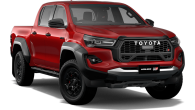
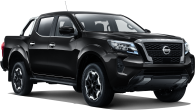




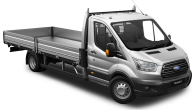
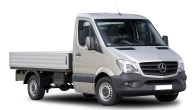





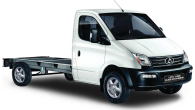




.jpg)
.jpg)
_3.webp)


.jpg)




.jpg)
Comments